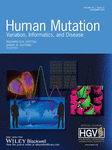Purifying Selection of mtDNA and the Shape of Human Evolution
Thanks to maternal inheritance, the mitochondrial genome evolves exclusively by accumulating mutations along the maternal line without undergoing recombination. Combined with a high replication rate, this makes mtDNA an invaluable tool to investigate how selection and population dynamics mutually interact, to shape human variation at different time scales.
Cavadas et al. (Hum Mutat 36:1100–1111, 2015) identify fluctuations in the impact of purifying selection on the unfolding of the worldwide mitochondrial phylogeny and analyse how these changes correspond to key events in human demography. The authors can target two very different time scales: the last 200,000 years and a single generation. They achieve this not through simulation analysis, but by focusing on an extensive mitochondrial dataset while following two complementary approaches. First, they consider the distribution of non-synonymous mutations across a reconstructed worldwide phylogeny of 18,471 available complete mitogenomes. Second, they analyse the loss vs. acquisition vs. sharing of heteroplasmic variants in mother-child pairs while assuming that mtDNA molecules carrying heteroplasmies behave similarly to a population within an individual.
This dual approach allows Cavadas et al. to detect how purifying selection shows fluctuations of activity that mirror human demography: They identify two episodes of relaxation of purifying selection associated with demographic expansions, dated to the end of the last Ice Age and the out-of-Africa exit, respectively. Importantly, this result argues for a shift of focus in studies evaluating the action of purifying selection on human genome evolution: from out-of-Africa centred models to postglacial expansion ones, where the impact was greater. The authors also show how purifying selection begins to act, although at a low level, even over a single generation. Finally, as a spin-off result of this extensive study, the authors point out that heteroplasmies observed in massive parallel sequencing (MPS) data might not signify poor quality, but be genuine, and hence they encourage a re-evaluation of the quality assessment for MPS data.




